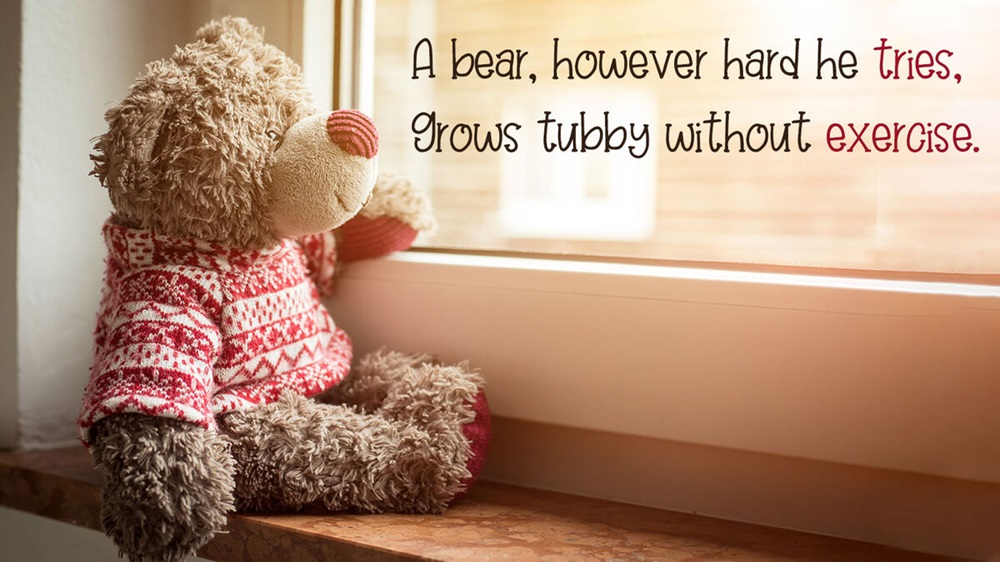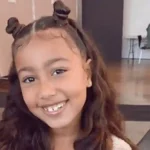Alright, let’s dive into the world of end rhyme—that sneaky poetic trick that makes poems stick in your head like gum on a shoe. I still remember when I first heard the term “end rhyme.” It felt kinda like discovering a secret handshake among poets. You think it’s just fancy words, but nope, it’s way cooler than that.
What Is End Rhyme? The Simple Definition
End rhyme is when the last words of two or more lines rhyme with each other. That’s it. Nothing fancy, just a neat little trick poets use to make their verses catchy.
Think of it as the closing act of a mini-concert in every line of a poem. When two lines end with words that sound alike, your brain perks up and says, “Hey, I like that!”
- Example:
“The cat sat on the mat,
And wore a funny hat.”
See? “Mat” and “hat” rhyme at the end of each line—classic end rhyme.
But end rhyme isn’t just about sounding nice. It’s about rhythm, flow, and giving poems that sweet, sweet music that makes you wanna nod along or even rap it out loud.
Why End Rhyme Is a Big Deal in Poetry
Honestly, I always thought rhymes were just for kids’ nursery rhymes or cheesy love poems. But end rhyme does way more than just sound cute.
- It creates predictability, which your brain loves.
- It gives a poem a structure that feels familiar and satisfying.
- It can add emphasis to the words it rhymes, making them stick out.
- It helps with memorization—you’re way more likely to remember a poem with a solid rhyme scheme.
End rhyme is kinda like the backbone of a poem’s melody.
Different Types of End Rhyme Patterns You Should Know
If you’re picturing end rhyme as just two lines rhyming here and there, wait till you meet the rhyme schemes. They’re like the poetry version of dance moves—once you learn the steps, you can bust out your own style.
Here are some popular rhyme schemes using end rhyme:
1. AABB
Lines 1 and 2 rhyme, then lines 3 and 4 rhyme.
Example:
“The sun dips low, the sky turns red (A)
Birds find their nests, they rest their head (A)
Night creeps in with silent feet (B)
Dreams arrive, so soft, so sweet (B)”
2. ABAB
Lines alternate rhyming.
Example:
“Waves crash hard upon the shore (A)
The moonlight dances on the sea (B)
Seagulls cry, forevermore (A)
Whispered secrets float to me (B)”
3. ABCB
Only the 2nd and 4th lines rhyme.
Example:
“The forest hides a secret deep (A)
Underneath the ancient tree (B)
Where shadows play and never sleep (C)
A melody drifts wild and free (B)”
It’s like a rhyme party with different dress codes. Pick your pattern and see how the mood changes.
End Rhyme vs. Other Rhyme Types: What’s the Difference?
Sometimes, people get tangled up trying to figure out if it’s end rhyme or something else. Here’s the quick-and-dirty:
- End rhyme: Rhymes happen at the end of lines.
- Internal rhyme: Rhymes happen within a single line.
- Slant rhyme: Words kinda rhyme but not perfectly (think: “shape” and “keep”).
- Eye rhyme: Words look like they rhyme but don’t when spoken (like “love” and “move”).
I’m pretty sure my brain tried to process this once and went “Nope, too much.” But end rhyme keeps it simple by focusing just on the line endings.
Classic Examples of End Rhyme From Famous Poems
Alright, let’s get into some good stuff. These poems nailed the end rhyme game so well, they’re practically the blueprint for poets everywhere.
William Shakespeare’s Sonnet 18
“Shall I compare thee to a summer’s day? (A)
Thou art more lovely and more temperate: (B)
Rough winds do shake the darling buds of May, (A)
And summer’s lease hath all too short a date: (B)”
Notice how “day” rhymes with “May,” and “temperate” rhymes with “date”? This alternating ABAB rhyme scheme gives the sonnet its elegant flow.
Robert Frost’s “Stopping by Woods on a Snowy Evening”
“The woods are lovely, dark and deep, (A)
But I have promises to keep, (A)
And miles to go before I sleep, (A)
And miles to go before I sleep.” (A)
Here, Frost uses a repeated end rhyme (deep, keep, sleep) to create a hypnotic effect. It’s like the poem is softly rocking you to sleep—or making you think about just how much you have left to do before you can.
Emily Dickinson’s Poem 479
“Because I could not stop for Death – (A)
He kindly stopped for me – (B)
The Carriage held but just Ourselves – (A)
And Immortality.” (B)
The alternating end rhyme here gives a calm but eerie rhythm to this poem about death and immortality.
Fun and Powerful Examples of End Rhyme in Modern Poetry
End rhyme isn’t just for dusty old poems. It’s alive and kicking in modern work, too.
Take Shel Silverstein, who could rhyme like nobody’s business:
“I’d like to be the kind of kid (A)
Who’s neat and tidy, clean and prim, (B)
But I just can’t—I’m kind of a mess (A)
And I think I rather like it that way, Jim.” (B)
Okay, maybe I made up “Jim” there—but you get the point. Silverstein’s playful end rhyme keeps the poem bouncy and relatable, like a chat with your quirky uncle.
Why End Rhyme Works: It’s More Than Just Sound
Here’s where it gets interesting. I read somewhere (and probably forgot where, because my memory is like a sieve) that end rhyme taps into the way our brains love patterns. Patterns help us predict what’s next, which feels safe and rewarding.
Plus, there’s this old idea that rhyme is like a handshake across time and culture. Like ancient poets used rhymes to help people remember their stories before writing was a thing. No kidding, rhymes were basically the ancient version of Spotify playlists.
So, when you hear end rhyme, you’re connecting with a tradition that’s thousands of years old. That’s wild.
How to Spot End Rhyme Without Overthinking It
Sometimes, people get too hung up trying to “analyze” poems. I mean, I’ve spent hours staring at a poem thinking, “Where’s the rhyme? What’s the pattern?” Then I realized, it’s usually just the last words that rhyme.
Try this simple trick next time:
- Read the poem out loud.
- Listen for the words that sound alike at the end of lines.
- If they rhyme, congratulations—you’ve found the end rhyme!
Trust me, poetry doesn’t have to feel like a cryptic puzzle.
Using End Rhyme in Your Own Writing: Tips and Tricks
Want to try your hand at end rhyme? I remember my first poem—it was basically “roses are red” level, but hey, practice makes better.
Here’s some advice that helped me:
- Start with simple words. Don’t try to rhyme “quixotic” with “schismatic” right off the bat. Keep it chill.
- Pick a rhyme scheme you like. AABB or ABAB are easy to start with.
- Don’t force it. If the rhyme feels awkward, change the word or line.
- Read it out loud. You’ll hear what works and what sounds weird.
- Experiment with slant rhymes. Sometimes a near rhyme feels more natural than a perfect one.
- Have fun! Poems don’t need to be serious all the time.
I wrote this paragraph by hand. Then spilled coffee on it. Classic.
End Rhyme’s Quirks and Surprises: Oddities to Know
Poetry’s not always neat, and end rhyme sometimes pulls weird stunts:
- Sometimes poets rhyme words that look alike but don’t sound alike (eye rhyme).
- End rhyme can get so repetitive it feels like a song stuck on repeat (hello, limericks).
- Some poets use end rhyme ironically to mock stiff poetry.
Here’s a wild historical tidbit: In medieval times, rhymes were sometimes so complicated they’d leave listeners scratching their heads. They’d rhyme words that barely sounded the same, just to show off. Straight up wild flex.
End Rhyme in Other Languages: Does It Work Everywhere?
Turns out, rhyme isn’t just an English thing. End rhyme shows up in lots of languages but sometimes in very different ways.
For example, in Japanese poetry like haiku, rhyme isn’t a big deal. Instead, syllable counts matter more.
In French poetry, rhymes have strict gender rules—masculine and feminine rhymes—that can make English rhymers feel lazy.
Honestly, I tried rhyming in another language once and ended up saying something like “I like cats and… potatoes?” Lost in translation is real.
Wrapping It Up: Why I Love End Rhyme (Even If I Sometimes Mess It Up)
End rhyme feels like that comfy blanket you pull over your head on a cold day. It’s familiar, soothing, and makes the wild world of poetry a bit more approachable.
Sure, sometimes I mess up the rhyme or pick words that sound like I’m trying too hard. But that’s the fun of it—poetry’s messy and human.
So next time you read a poem or scribble down a verse, listen for the end rhyme. Let it guide you or surprise you.
Maybe it’ll remind you of a silly childhood rhyme or make you laugh out loud at a clever twist.
And if it doesn’t, well—at least you tried. I’ll keep messing up my rhymes and loving the chaos.








